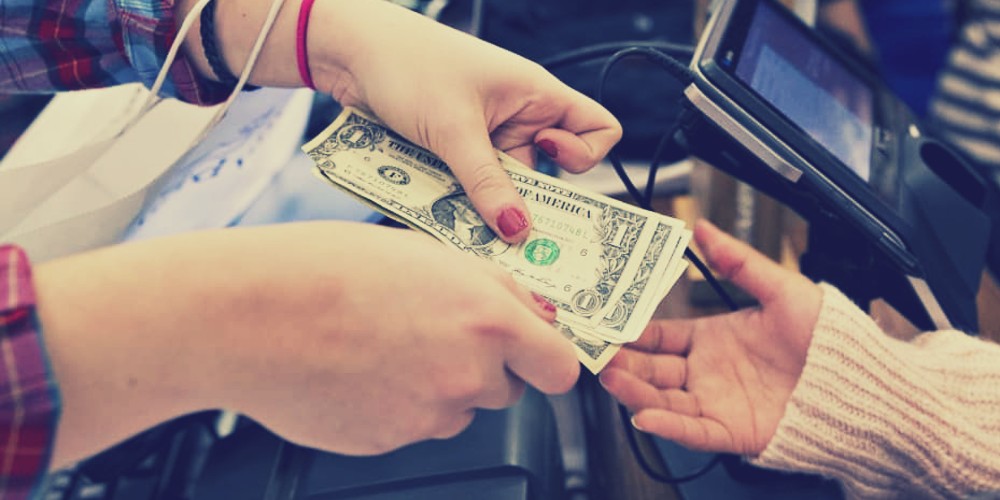American consumers continued to pile on debt in February, but the pace of borrowing slowed significantly, another sign the economy could be heading toward a recession.
Overall, consumer debt grew by $15.3 billion in February, a 3.8% annual increase, according to the latest data from the Federal Reserve. That compares with an upwardly revised 19.5 billion increase in January. Americans now owe a record $4.82 trillion in consumer debt.
The Federal Reserve consumer debt figures include credit card debt, student loans, and auto loans, but do not factor in mortgage debt. When you include mortgages, US households are buried under more than $16.9 trillion in debt. Household debt charted the biggest increase in two decades in the fourth quarter of 2022.
Credit card debt grew at a much slower pace in February, in line with the drop in retail sales. Lower fuel and energy prices gave consumers some relief, even as price inflation remains elevated. As Forbes reported in February, retail sales that month told a “story of consumers leaning into value and curtailed spending.” The borrowing data confirms this.
Revolving debt, primarily reflecting credit card borrowing increased by $5 billion in February, a 3.8% increase. In absolute terms, it was the smallest increase in revolving credit since April 2021. But credit card borrowing still remains slightly higher than the prepandemic average even with higher interest rates as Americans continue to cope with rapidly increasing prices.
To put the numbers into perspective, the annual increase in 2019, prior to the pandemic, was 3.6%. It’s pretty clear that Americans are still heavily relying on credit cards to make ends meet. Bloomberg reported, “Still, many Americans are leaning on credit cards to keep up with rising prices. A Census Bureau survey in early March showed about a third of Americans said they used credit cards or loans to meet their spending needs.”
Americans now owe a record $1.22 trillion in revolving debt. The bigger problem is the double whammy of rising debt and rising interest rates.
Average credit card interest rates eclipsed the record high of 17.87% months ago. The average annual percentage rate (APR) currently stands at 20.11%. NBC News revealed just the impact of rising interest rates on indebted consumers.
Bankrate data shows it would take 16 years for someone to pay off the current average credit card balance of $5,474 by making the minimum payments at 19.2%. At that point, they would have shelled out $7,365 in interest alone.”
Given that the CPI is still closer to last year’s high than it is to the Fed’s 2% target, the central bank still needs to raise rates higher to slay price inflation. This is going to be difficult given the amount of debt piled up not only by consumers but also governments and corporations. As economist Daniel Lacalle put it, rising interest rates are on a collision course with a wall of debt.
People are already struggling to pay the bill. According to a Moody’s Analytics analysis of Equifax data, nearly 25 million people are behind on credit card, auto loan, or personal loan payments. We haven’t seen delinquency levels like this since 2009.
The growth of non-revolving credit has cratered in the last three months. This debt includes auto loans, student loans, and borrowing for other big-ticket items.
Revolving credit grew by just $10.3 billion in February, a 3.4% increase. This was up from the meager 1.7% increase in December and the 2.2% increase in January, but it remains below the average growth of 5% in recent years.
The plunge in non-revolving credit indicates that consumers have cut back spending on big-ticket items. That could signal that the economy is slowing under the weight of high interest rates.
Don’t wait for a stock market crash, dedollarization, or CBDCs before securing your retirement with physical precious metals. Genesis Gold Group can help.
And now we’re seeing a similar slowdown in credit card debt. Does this indicate Americans are getting close to the end of their ropes?
The American economy depends on consumers spending money. They relied on plastic to make ends meet as price inflation blazed through the economy. Prices are still going up, but a lot of people have to be getting close to their borrowing limit.
So, what happens when consumers max out those credit cards? How will they make ends meet? How will it impact an economy that relies on borrowing and spending to limp along? And how will the Fed slay price inflation without popping the massive debt bubble?
Mainstream pundits and policy analysts don’t seem to be asking these questions. They probably should.
About the Author
Michael Maharrey is the managing editor of the SchiffGold blog, and the host of the Friday Gold Wrap Podcast and It’s Your Dime interview series. View all posts by Michael Maharrey. Article cross-posted from Schiff Gold.

It’s becoming increasingly clear that fiat currencies across the globe, including the U.S. Dollar, are under attack. Paper money is losing its value, translating into insane inflation and less value in our life’s savings.
Genesis Gold Group believes physical precious metals are an amazing option for those seeking to move their wealth or retirement to higher ground. Whether Central Bank Digital Currencies replace current fiat currencies or not, precious metals are poised to retain or even increase in value. This is why central banks and mega-asset managers like BlackRock are moving much of their holdings to precious metals.
As a Christian company, Genesis Gold Group has maintained a perfect 5 out of 5 rating with the Better Business Bureau. Their faith-driven values allow them to help Americans protect their life’s savings without the gimmicks used by most precious metals companies. Reach out to them today to see how they can streamline the rollover or transfer of your current and previous retirement accounts.



